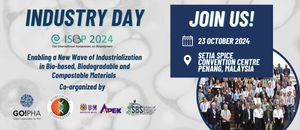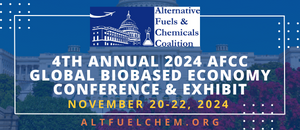Researchers from the Institute of Agrochemistry and Food Technology in Valencia (Spain) jointly with colleagues from Aston University in Birmingham (UK), in the framework of the ERA CoBioTech funded project MeMBrane (www.membrane.org.uk), investigated the tolerance to ethanol of a set of 64 baker’s yeast strains from diverse origins. The main goal of this kind of screening is to find new yeast with potential interest in the industry. In this case, yeast could cope with highly demanding environmental stress at bio-ethanol production or winemaking.
Visuals and PDF file in English available at: www.nova-institute.eu/press/?id=280

Interestingly, the reported range of tolerance among the 64 candidates was very wide, with values from as low as 5% to over 16% ethanol. Normally, the origin of the strains was closely related to its behaviour, indicating evolutive links between ethanol resistance and source of isolation, E. g., those strains found in wine reactors generally presented higher ethanol tolerance than strains isolated from tree barks or soil.
The authors state that traditionally, and mostly based on observations made on laboratory-bred yeast, the generally accepted hypothesis by the scientific community is that microorganisms’ response to the presence of ethanol in the environment relies on making their membranes tighter so that ethanol molecules cannot sneak in between membrane components and disturb its structure. However, these findings open the possibility for more complex hypotheses. One, that depending on a yeast evolution history, its mechanism to overcome ethanol stress might be different; and two and more importantly, that yeast ability to make its membrane more fluid in the presence of ethanol might prevent this toxic molecule from accumulating in the inner parts of the cell as it would diffuse out to the media and, as a result, its harmful action within the cell would be diminished.
The authors propose the regulation of phenylethylamine (PE) synthesis as a mechanism to increase ethanol tolerance. This plasma membrane compound is reduced in the more tolerant strains and is currently under investigation as a target to develop improved yeast strains in the future. With global climate change resulting in higher levels of sugar and ethanol in grapes during wine-making, and the increasing need for a bio-based alternative to fossil fuel-derived ethanol, this breakthrough is a welcome insight into the workings of biological membranes.


Source
nova-Institut GmbH, press release, 2021-07-07.
Supplier
Aston University
IATA-CSIC
nova-Institut GmbH
Share
Renewable Carbon News – Daily Newsletter
Subscribe to our daily email newsletter – the world's leading newsletter on renewable materials and chemicals

















